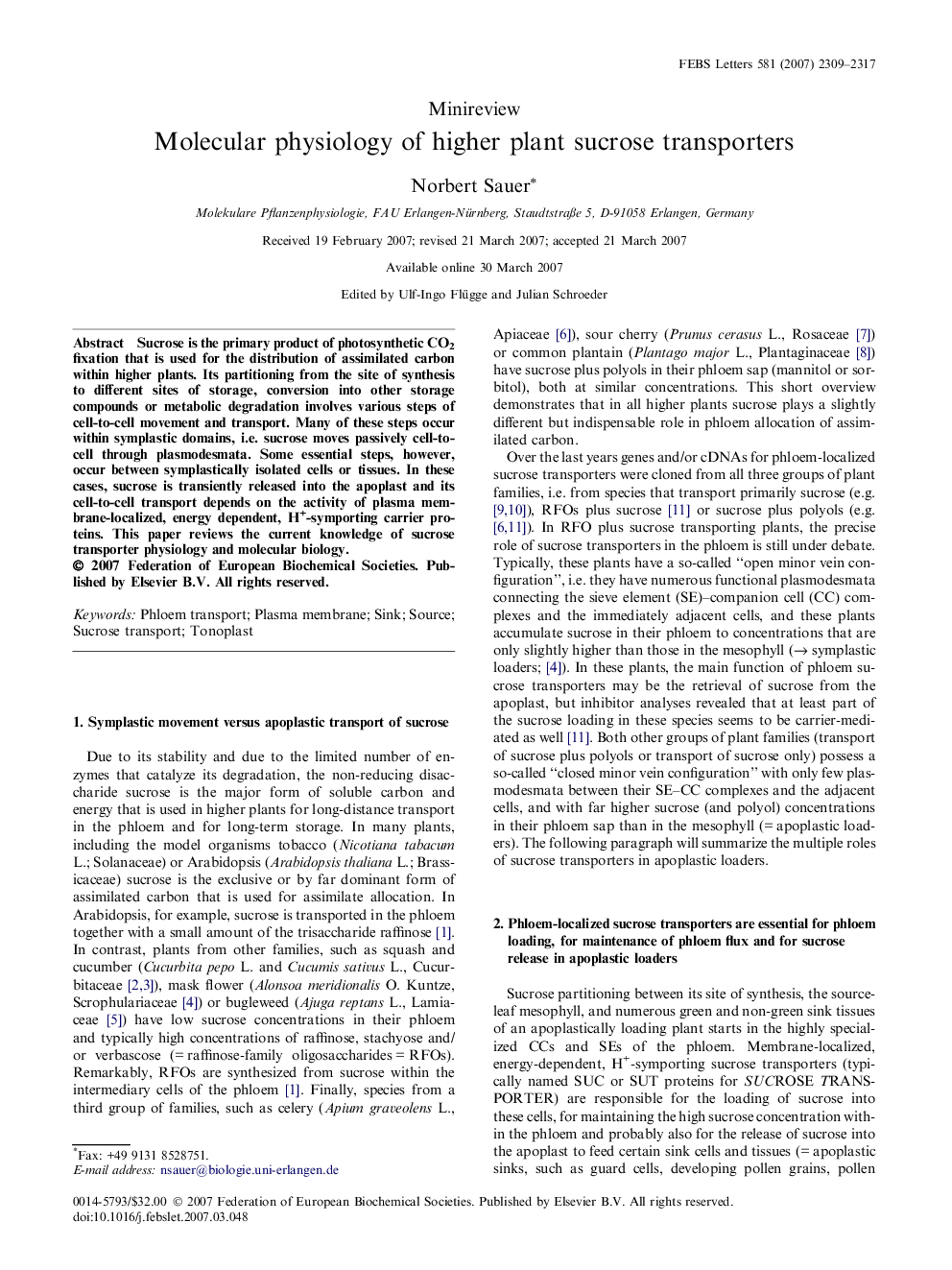| Article ID | Journal | Published Year | Pages | File Type |
|---|---|---|---|---|
| 2051098 | FEBS Letters | 2007 | 9 Pages |
Sucrose is the primary product of photosynthetic CO2 fixation that is used for the distribution of assimilated carbon within higher plants. Its partitioning from the site of synthesis to different sites of storage, conversion into other storage compounds or metabolic degradation involves various steps of cell-to-cell movement and transport. Many of these steps occur within symplastic domains, i.e. sucrose moves passively cell-to-cell through plasmodesmata. Some essential steps, however, occur between symplastically isolated cells or tissues. In these cases, sucrose is transiently released into the apoplast and its cell-to-cell transport depends on the activity of plasma membrane-localized, energy dependent, H+-symporting carrier proteins. This paper reviews the current knowledge of sucrose transporter physiology and molecular biology.
